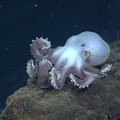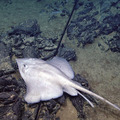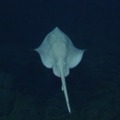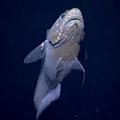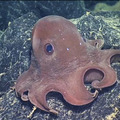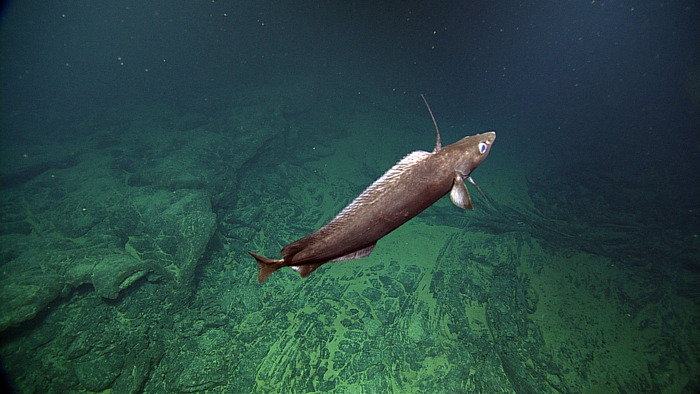Several species of bony fish have been documented at Axial. Scroll down to learn of several of these fish, of which the Rattail is by far the most common.
Rattail (Coryphaenoides acrolepis)
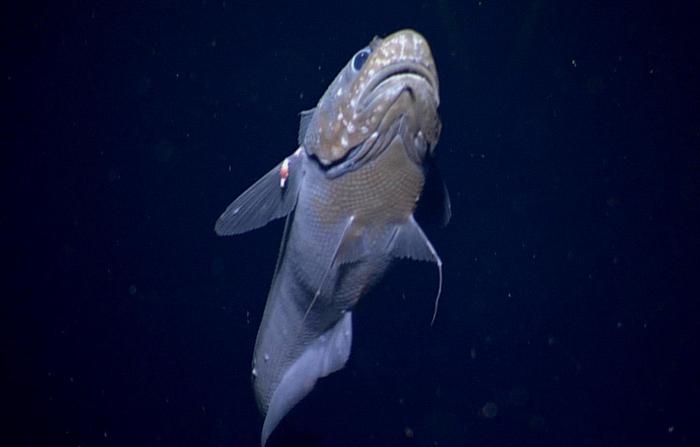 The common names Rattail and Grenadier refer to a group of large, brown to black, deep sea fish from the family Macrouridae. The group is characterized by their large heads and slender bodies that narrow into a thin tail, from which they get their common name. They are also known for their large mouths and eyes. As a family they are considered to be one of the most abundant deep sea fish. Young Coryphaenoides acrolepis are typically gray to grayish brown, and turn darker with age.
The common names Rattail and Grenadier refer to a group of large, brown to black, deep sea fish from the family Macrouridae. The group is characterized by their large heads and slender bodies that narrow into a thin tail, from which they get their common name. They are also known for their large mouths and eyes. As a family they are considered to be one of the most abundant deep sea fish. Young Coryphaenoides acrolepis are typically gray to grayish brown, and turn darker with age.
Rattails have long life spans. Coryphaenoides acrolepis as old as 73 years have been reported. They are generalists when it comes to feeding, eating smaller fish, crustaceans, cephalopods and others. They are considered an apex predator of their ecosystems.
Rattail fish are extremely common at Axial Seamount, and can be seen near the vents and in the surrounding areas. Coryphaenoides acrolepis generally range between 46 – 65cm (18 -25.5in) in length. The largest measured specimen was 104cm (41in).
References:
http://www.pmel.noaa.gov/eoi/nemo/explorer/bio_gallery/biogallery-Info.00036.html
http://www.fishbase.org/summary/8467
http://www.mbari.org/news/feature-image/rattail.html
http://seavenger.info/rat-tail-fish/
Giant Rattail (Albatrossia pectoralis)
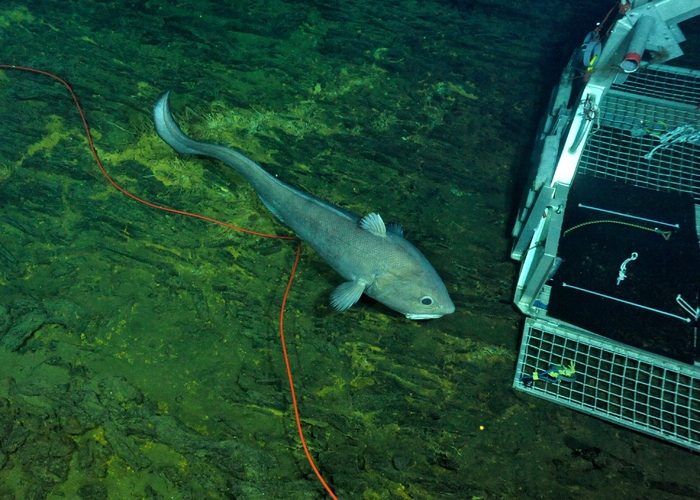 This large rattail is found at depths between 140 and 3,500 meters, and it has been known to reach lengths of up to 2.1 meters. The oldest reported A. pectoralis was 56 years of age. Many traits of the Rattail belong to the Giant Rattail, as well, such as the elongated snout and distinctly pointed tail. The Giant Rattail consumes mostly squid, but other echinoderms and amphipods as well.
This large rattail is found at depths between 140 and 3,500 meters, and it has been known to reach lengths of up to 2.1 meters. The oldest reported A. pectoralis was 56 years of age. Many traits of the Rattail belong to the Giant Rattail, as well, such as the elongated snout and distinctly pointed tail. The Giant Rattail consumes mostly squid, but other echinoderms and amphipods as well.
References:
https://en.wikipedia.org/wiki/Giant_grenadier
http://www.fishbase.org/summary/8435
http://www.strangeanimals.info/2011/03/giant-grenadier.html
Pacific Flatnose (Antimora microlepis)
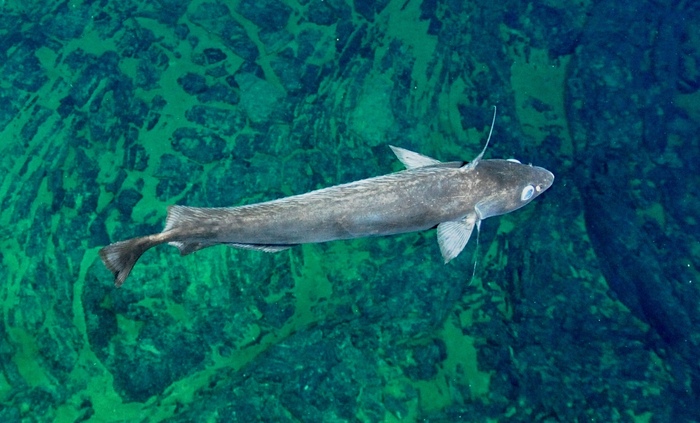 The Pacific Flatnose comes from a family of cod-like fish, which are only distinguishable by their skeletal structures and swim bladders. They have short heads, pointed snouts, and chin barbels. They’re coloring is variable ranging from pale blue-gray or olive green to dark violet or black. Their fins are darker on the outer edges.
The Pacific Flatnose comes from a family of cod-like fish, which are only distinguishable by their skeletal structures and swim bladders. They have short heads, pointed snouts, and chin barbels. They’re coloring is variable ranging from pale blue-gray or olive green to dark violet or black. Their fins are darker on the outer edges.
Pacific Flatnose feed on bottom-dwelling invertebrates. Several Pacifc Flatnose have been observed at Axial Caldera. They are as large as 75cm (29.5in) in length and weigh up to 2,100g (4.6lbs).
References:
http://eol.org/pages/993233/details
Fathead Sculpin (Psychrolutes phrictus)
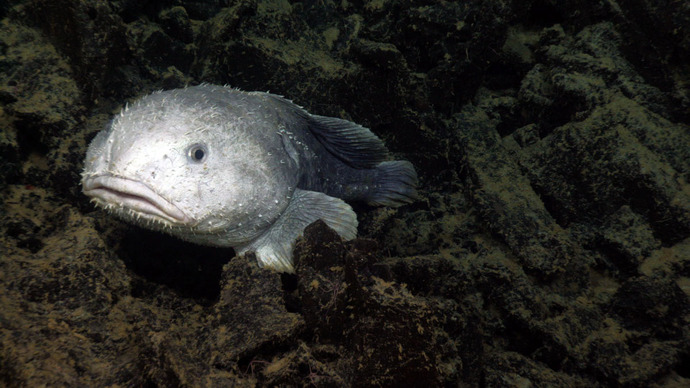 The Fathead Sculpin (also known as the Blob Sculpin) is a large marine sculpin. They have big heads and tapering bodies that end in a small, flat tail, giving them a body shape similar to tadpoles. The fish doesn’t have scales but is covered in soft spines. They have large pectoral fins.
The Fathead Sculpin (also known as the Blob Sculpin) is a large marine sculpin. They have big heads and tapering bodies that end in a small, flat tail, giving them a body shape similar to tadpoles. The fish doesn’t have scales but is covered in soft spines. They have large pectoral fins.
As adults they are bottom-dwelling, spending their time on the seafloor. They grow to be more than a meter (3.28 feet) long, and can be nearly the same in width.
References:
http://www.pmel.noaa.gov/eoi/nemo/explorer/bio_gallery/biogallery-Info.00035.html

